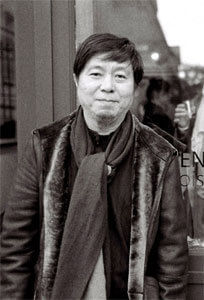Born in 1962 in Chong Qing, Chen Jiagang began his career as a celebrated architect and real estate developer before making the transition to photography. In 1999, he was named one of twelve "Outstanding Young Architects" by the United Nations. Jiagang is the founder of the Sichuan Upriver Museum, the first private museum in China and the author of Third Front (Timezone 8 Limited, 2007). He currently lives and works in Beijing.
Source: Edwynn Houk Gallery
Although originally trained as an architect (and awarded by the UN the accolade of being one of the 12 ‘outstanding young architects' in China), Chen Jiagang has been a practicing photographer for over 12 years, and has exhibited widely since 1999. He has twice been awarded the Excellent Works Award at the annual China Photographic Arts Exhibitions.
Chen photographs often feature obsolete and useless factories, hidden away in his country's hinterlands. Among these monumental, abandoned ruins, these industrial leftovers, he places ghostly human figures, reminding us of the workers who lost their jobs and were sent back home to start again. He documents the effects on society of China's extraordinary development drive in these large, sumptuous compositions.
Source: Waterhouse & Dodd
1980-1984 studied in Architecture Department of Chongqing Architecture College from 1980 to 1984.
1984-1992 worked in Southwest Architecture Design Institute as a National Certified Architect, and had been awarded grand architecture prizes in various types for many times.
1992 founded the Company of Chengdu Haosi Property Development.
1996 the Company of Sichuan Gangjia Architecture Design.
1997 founded Sichuan Upriver Stock Co., Ltd.
1997 founded Upriver Art Gallery, the first private Art Gallery in China.
1998 founded Chengdu Upriver Guildhall and Kunming Upriver Guildhall.
1999 elected as one of the twelve "Outstanding Young Architect" of China by UN.
2001 Bigining to be an artist from then on.
2002 The excellent works prize of the 20th China Photographic Exhibition.
2003 The excellent works prize of the 21th China Photographic Exhibition.
Personal Exhibitions
2012
Diseased City, Paris-Beijing Photo Gallery, Paris, France
Chen Jiagang photography, Galerie Forsblom, Helsinki, Finland
